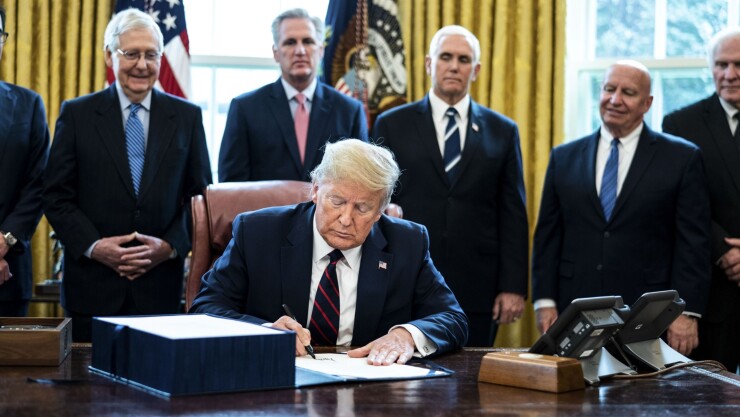The Federal Reserve now has a playbook it can use when the next financial crisis hits the municipal bond market, panelists at the Brookings Institution’s 10th Municipal Finance Conference said on Monday.
During the height of financial crisis caused by the COVID-19 pandemic both monetary and legislative fiscal policies were used to help the financial markets.
In 2020, Congress approved the $2.2 trillion Coronavirus Aid, Relief and Economic Security Act (CARES Act) while the Federal Reserve created a $500 billion Municipal Liquidity Facility (MLF) for short-term debt.

The programs worked together as a backstop to keep the municipal bond market up and functioning smoothly.
“Historically, central banks have been reluctant to step in and take credit risk in the midst of a panic … and so the CARES act did two things it relieved those credit risks by sending money to state and local governments so they’re not relying on the bond market to potentially raise funds at time when it’s very expensive but it also helped with credit risk perceptions,” said Blake Marsh of the Federal Reserve Bank of Kansas City, who presented a
“It also gave the Federal Reserve more latitude to take on a little more credit risk, at least short-term,” he said. “That’s important to the muni issuers because if you’re concerned about the fact that you may need 30 days or six months of financing when you’re not collecting revenue, you can borrow it at a reasonable cost and then repay it when the tax receipts come in. I think that wouldn’t have really been possible without the backstop.”
Brad Wendt of Charles River Associates said while the backstop wasn’t used very often, it gave the public confidence liquidity was available, if needed.
“This really proves what all of our gut instincts told us on day one. Those who lived through the Great Recession of 2007-2009 knew that was a credit crisis, but obviously no one knew the playbook for a liquidity crisis which had a long tail-line,” he said. “One takeaway from this paper is the fact that you now have a proven toolbox based on the data from the MSRB municipal trades.”
Looking ahead, Wendt said it appears coordinated policy can be used effectively to help the market and issuers in distress.
The two components working together — the congressional authorization of the CARES Act and the Fed’s MLF — that turned the tide, he said.
“I don’t think they could have done anything different because it worked perfectly. It was a real success story. The data bears out that it was a success story for the municipal marketplace,” Wendt said.
“Given the circumstances, I think the Fed has done its best. Of course, we can always learn from this episode,” said Huixin Bi of the Kansas City Fed. “So, going forward, we will look at how we can best deploy these facilities in the future.”
The conference is a joint venture of the Hutchins Center on Fiscal and Monetary Policy at Brookings, the Rosenberg Institute of Global Finance at the Brandeis International Business School, the Olin Business School at Washington University in St. Louis and the Harris School of Public Policy at the University of Chicago.





